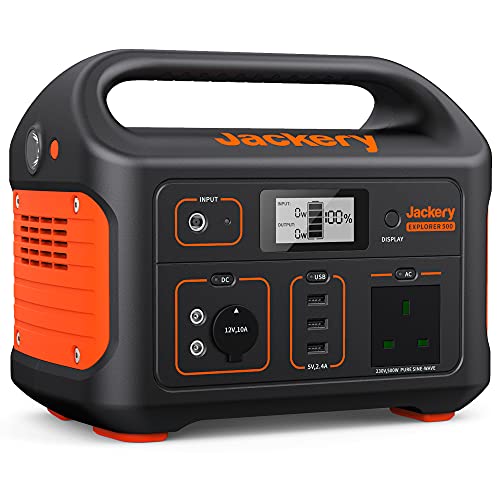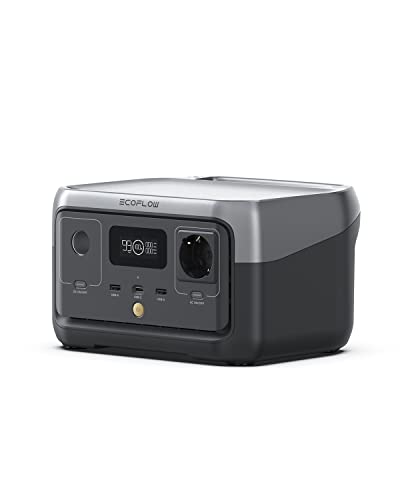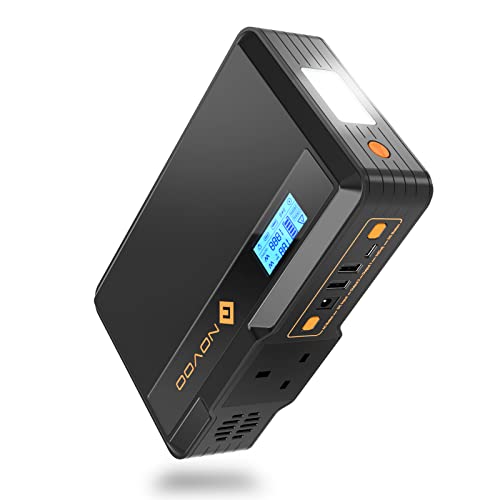The Ultimate Guide to Choosing the Best Power Station for Car Camping
Car camping offers the thrill of the great outdoors with the comforts of modern living. One essential component of this experience is a reliable power station. From charging your electronics to powering appliances, a good power station can make your camping trip more enjoyable and less stressful. This comprehensive guide will help you understand what to look for when choosing the best power station for car camping.
Introduction
Car camping, an increasingly popular form of outdoor recreation, combines the adventure of camping with the convenience of having your vehicle nearby. One of the critical aspects of modern car camping is ensuring a stable power supply. This guide explores everything you need to know about selecting the best power station to enhance your car camping experience.
Why You Need a Power Station for Car Camping
A power station is more than a luxury; it's a necessity for many car campers. Here are some reasons why:
1. Charging Electronics: Phones, cameras, GPS devices, and laptops all need power. A power station ensures these gadgets remain functional.
2. Powering Appliances: Whether it’s a portable fridge, a fan, or even a small heater, a power station can keep your appliances running.
3. Lighting: Campsites can get very dark. A power station can power lights to keep your campsite illuminated.
4. Medical Devices: For those who rely on medical devices like CPAP machines, having a reliable power source is crucial.
5. Emergency Preparedness: A power station can be a lifesaver in emergencies, providing power for communication devices and other essential tools.
Understanding Power Stations
Before diving into specific products, it’s important to understand what a power station is and how it works.
What is a Power Station?
A power station, also known as a portable power bank or portable generator, is a device that stores electrical energy and can be used to power various electronic devices. These devices typically come with multiple output options, such as USB ports, AC outlets, and DC outlets, allowing them to charge and power a wide range of gadgets and appliances.
Key Components of a Power Station
1. Battery: The heart of any power station is its battery. The type, capacity, and efficiency of the battery determine how long and how well the power station will perform.
2. Inverter: Converts DC power stored in the battery to AC power, which is used by most household appliances.
3. Charge Controller: Manages the power flow from the battery to the devices and from the charging source to the battery.
4. Ports: Different types of ports for various devices, including USB (both A and C), AC, and DC outlets.
5. Display: Provides information on the power station’s status, including remaining battery life, power input/output, and more.
Factors to Consider When Choosing a Power Station
Choosing the right power station involves considering several factors to ensure it meets your specific needs.
Battery Capacity
Battery capacity is measured in watt-hours (Wh) and indicates how much energy the power station can store. The higher the capacity, the longer the power station can run your devices.
- Small Capacity (up to 200Wh): Suitable for charging small devices like phones, tablets, and cameras.
- Medium Capacity (200Wh to 500Wh): Ideal for running small appliances, lights, and charging multiple devices.
- Large Capacity (500Wh and above): Best for extended trips or running high-power devices like portable fridges and CPAP machines.
Power Output
The power output, measured in watts (W), determines what kind of devices you can power with the station.
- Low Power Output (up to 100W): Suitable for small electronics like phones and cameras.
- Medium Power Output (100W to 500W): Can handle small appliances, laptops, and multiple devices simultaneously.
- High Power Output (500W and above): Necessary for larger appliances and tools.
Portability
Consider the size and weight of the power station. For car camping, you’ll want something that’s easy to transport and doesn’t take up too much space in your vehicle.
Charging Options
Look for power stations that offer multiple charging options, including:
- AC Charging: Standard wall outlet charging. An AC cable is normally included with all power stations and this is the most common way to charge your power station.
- DC Charging: Charging via a car’s 12V outlet. A DC cable isn't always included with the power station, so quite often requires an additional purchase. If you do require DC charging then do your research prior to purchasing, and find out how much a cable will cost if not included. DC charging is handy for recharging your power station while driving, so very useful for multi-stopover trips.
- Solar Charging: Charging using solar panels, ideal for off-grid camping.
Number and Type of Ports
Ensure the power station has enough ports to accommodate all your devices. Common port types include:
- USB-A and USB-C: For phones, tablets, and other small electronics. At a minimum we'd suggest 2 x USB-A and 1 x USB-C.
- AC Outlets: For household appliances and larger devices.
- DC Outlets: For car accessories and certain appliances.
Durability
Look for a power station that is robust and can withstand the rigors of outdoor use. Water-resistance, dust-proofing, and overall build quality are important considerations.
Additional Features
Some power stations come with extra features that can be very useful, such as:
- Built-in Flashlight: Handy for finding things in the dark.
- LCD Display: Provides useful information about power usage and battery status.
- Expandable Batteries: Allows you to increase capacity as needed.
Top Power Stations for Car Camping
Here’s a detailed look at some of the best power stations available for car camping, highlighting their features, pros, and cons.
1. Jackery Explorer 500
Specifications:
- Capacity: 518Wh
- Output: 500W (1000W surge)
- Weight: 13.32 lbs
- Ports: 3 x USB-A, 1 x 12V car port, 2 x AC outlets
Features:
- Pure sine wave inverter for clean power
- LCD screen with charge/discharge information
- Compatible with solar panels for off-grid charging
Pros:
- Reliable and durable
- Good balance of capacity and portability
- Multiple charging options
Cons:
- Higher price point
- Limited AC outlets
2. Goal Zero Yeti 500X
Specifications:
- Capacity: 505Wh
- Output: 300W (1200W surge)
- Weight: 12.9 lbs
- Ports: 4 x USB-A, 2 x 12V car port, 2 x AC outlets
Features:
- Versatile port options
- Solar panel compatibility
- Informative display screen
Pros:
- Lightweight and portable
- Good range of ports
- Reliable brand
Cons:
- Lower AC output compared to some competitors
- Pricey
3. EcoFlow River Pro
Specifications:
- Capacity: 720Wh
- Output: 600W (1200W surge)
- Weight: 15.9 lbs
- Ports: 3 x USB-A, 1 x USB-C, 1 x 12V car port, 3 x AC outlets
Features:
- Fast charging technology
- Expandable battery options
- Mobile app for monitoring and control
Pros:
- High power output
- Fast charging capabilities
- Expandable capacity
Cons:
- Heavier than some alternatives
- Higher cost
4. Anker PowerHouse II 400
Specifications:
- Capacity: 388Wh
- Output: 300W (600W surge)
- Weight: 9.7 lbs
- Ports: 2 x USB-A, 1 x USB-C, 1 x 12V car port, 1 x AC outlet
Features:
- Compact and portable design
- Multiple port options
- Durable construction
Pros:
- Lightweight and easy to carry
- Reliable brand
- Good balance of power and portability
Cons:
- Lower capacity
- Limited AC outlets
5. Bluetti EB70
Specifications:
- Capacity: 716Wh
- Output: 700W (1400W surge)
- Weight: 21.4 lbs
- Ports: 4 x USB-A, 2 x USB-C, 1 x 12V car port, 2 x AC outlets
Features:
- High power output
- Multiple charging options
- Durable and rugged design
Pros:
- High capacity
- Versatile port selection
- Robust build quality
Cons:
- Heavier than some competitors
- More expensive
How to Use a Power Station for Car Camping
Setting Up Your Power Station
1. Charge Fully Before Departure: Ensure your power station is fully charged before you leave for your trip.
2. Position Properly: Place your power station in a secure and easily accessible location in your vehicle.
3. Connect Devices: Plug in your devices using the appropriate ports.
Efficient Power Management
1. Prioritize Essential Devices: Charge essential devices first to ensure you have power for critical needs.
2. Monitor Power Usage: Keep an eye on the power station’s display to manage your power consumption.
3. Use Energy-Efficient Devices: Opt for devices that consume less power to extend the battery life of your power station.
Solar Charging
1. Choose Compatible Solar Panels: Ensure the solar panels you use are compatible with your power station.
2. Position Panels Properly: Place the solar panels in a sunny location for optimal charging.
3. Monitor Charging: Keep an eye on the charging process to ensure everything is functioning correctly.
Safety Tips
1. Avoid Overloading: Don’t exceed the power station’s maximum output capacity.
2. Keep Dry: Protect your power station from water and moisture.
3. Proper Ventilation: Ensure your power station has adequate ventilation to prevent overheating.
4. Regular Maintenance: Periodically check and maintain your power station to ensure it remains in good working condition.
Conclusion
Choosing the right power station for car camping can significantly enhance your outdoor experience. By considering factors like battery capacity, power output, portability, and additional features, you can find a power station that meets your needs. Whether you’re a weekend warrior or a seasoned adventurer, a reliable power station will keep your devices charged, your appliances running, and your campsite illuminated.
Investing in a high-quality power station is a decision that will pay off in countless ways, ensuring you have the power you need, whenever and wherever you need it. Happy car camping!



